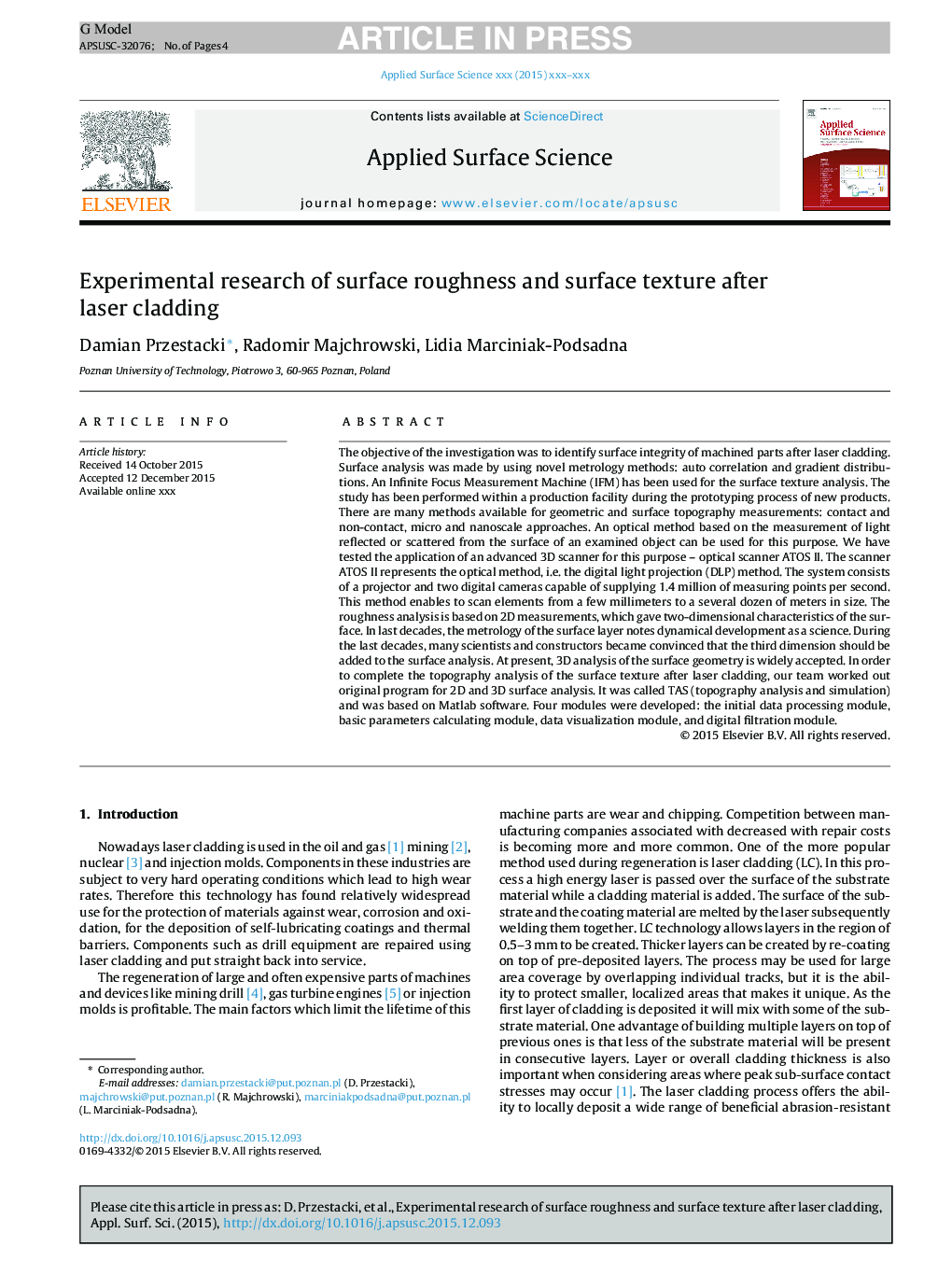| کد مقاله | کد نشریه | سال انتشار | مقاله انگلیسی | نسخه تمام متن |
|---|---|---|---|---|
| 5348560 | 1388083 | 2016 | 4 صفحه PDF | دانلود رایگان |
عنوان انگلیسی مقاله ISI
Experimental research of surface roughness and surface texture after laser cladding
ترجمه فارسی عنوان
تحقیقات تجربی زبری سطح و بافت سطحی پس از روکش لیزری
دانلود مقاله + سفارش ترجمه
دانلود مقاله ISI انگلیسی
رایگان برای ایرانیان
موضوعات مرتبط
مهندسی و علوم پایه
شیمی
شیمی تئوریک و عملی
چکیده انگلیسی
The objective of the investigation was to identify surface integrity of machined parts after laser cladding. Surface analysis was made by using novel metrology methods: auto correlation and gradient distributions. An Infinite Focus Measurement Machine (IFM) has been used for the surface texture analysis. The study has been performed within a production facility during the prototyping process of new products. There are many methods available for geometric and surface topography measurements: contact and non-contact, micro and nanoscale approaches. An optical method based on the measurement of light reflected or scattered from the surface of an examined object can be used for this purpose. We have tested the application of an advanced 3D scanner for this purpose - optical scanner ATOS II. The scanner ATOS II represents the optical method, i.e. the digital light projection (DLP) method. The system consists of a projector and two digital cameras capable of supplying 1.4 million of measuring points per second. This method enables to scan elements from a few millimeters to a several dozen of meters in size. The roughness analysis is based on 2D measurements, which gave two-dimensional characteristics of the surface. In last decades, the metrology of the surface layer notes dynamical development as a science. During the last decades, many scientists and constructors became convinced that the third dimension should be added to the surface analysis. At present, 3D analysis of the surface geometry is widely accepted. In order to complete the topography analysis of the surface texture after laser cladding, our team worked out original program for 2D and 3D surface analysis. It was called TAS (topography analysis and simulation) and was based on Matlab software. Four modules were developed: the initial data processing module, basic parameters calculating module, data visualization module, and digital filtration module.
ناشر
Database: Elsevier - ScienceDirect (ساینس دایرکت)
Journal: Applied Surface Science - Volume 388, Part A, 1 December 2016, Pages 420-423
Journal: Applied Surface Science - Volume 388, Part A, 1 December 2016, Pages 420-423
نویسندگان
Damian Przestacki, Radomir Majchrowski, Lidia Marciniak-Podsadna,
